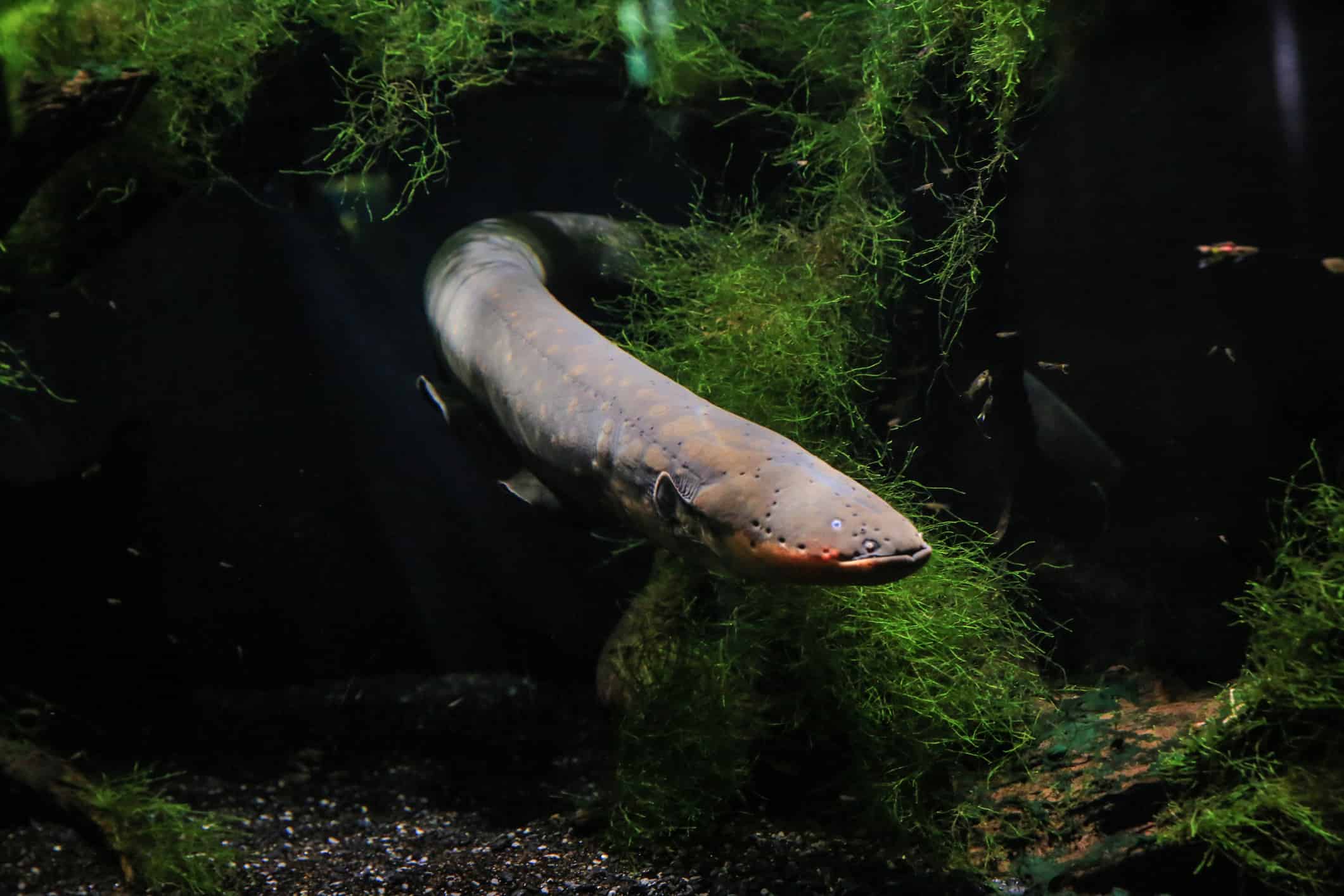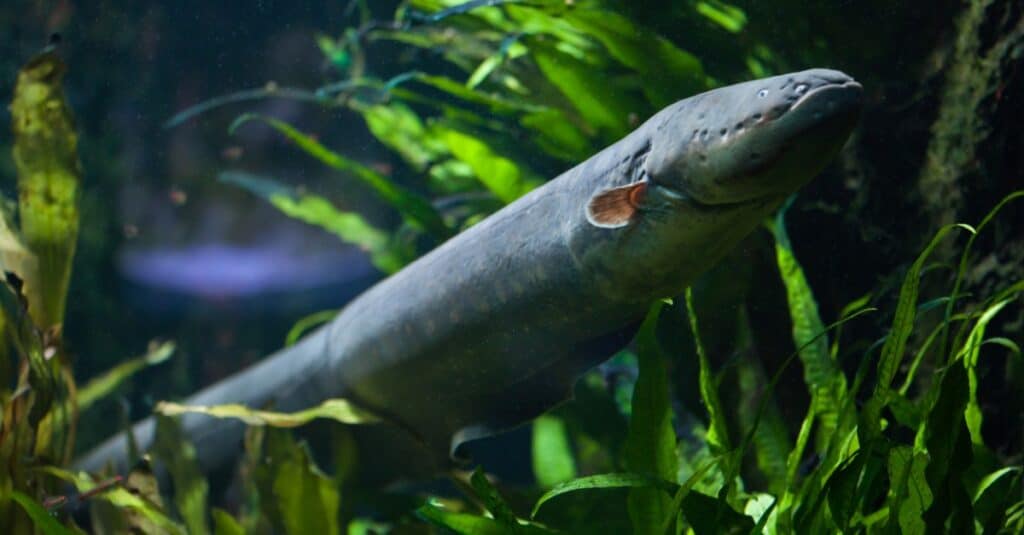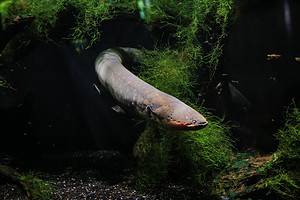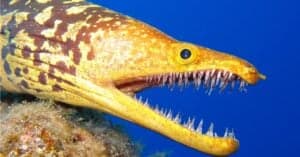Continue reading for our analysis...

Crocodiles may be the apex predators of their environment but even they will get a shock (sometimes literally) when taking on an electric eel.
This video clip shows a crocodile’s reaction to biting an electric eel. After it bites, the crocodile begins to thrash as it tries to take on the eel. Normally, a crocodile would pull the other animal down under the water. This is often enough to kill their prey and is also known as a death roll. But in this case, the eel has its own defenses.
Activating its nervous system, the eel generates electricity that travels from it to the crocodile. The crocodile begins to twitch as the electric current goes through its body. The crocodile actually succumbs to the shock and dies. But the eel is still trapped in its jaws.
Is It Normal Behavior For Crocodiles to Eat Electric Eels?

Electric eels have no known natural predators besides humans.
©Cattleya2017/Shutterstock.com
The short answer here is no. Crocodiles don’t normally chomp on electric eels. Electric eels, apart from human fishing, enjoy a unique status in the animal kingdom with no known natural predators.
Their electric discharge serves as a powerful deterrent to other species, making them too dangerous to pursue, regardless of the water levels.
In shallower waters, the potential threat of large land mammals approaching the eels exists, but this danger is frequently averted by the eel’s formidable shock, which effectively safeguards them from would-be attackers.
Do Electric Eels Generate Electricity?
The ability to generate electricity is done through the eel’s nervous system. A specialized signal tells individual cells to generate a charge. Almost like a giant stack of tiny batteries, all of the cells fire at the same time when the eel’s system gives them the go-ahead.

The Electric Eel is found in freshwater and uses its electric current to attack its prey.
©iStock.com/wrangel
This is all done through three organs in the eel’s body, the main electrical organ, the Hunter’s organ, and the Sachs’ organ. These are all electrical organs and synchronize the signals to create a stronger electrical current overall. However, not all of these organs produce the same amount of current. Stronger charges come from the main electrical organ and part of the Hunter’s organ. This requires a lot of energy from the eel and is only done as a means of defense, such as when it is bitten by a crocodile. They can also use this charge in small doses to attack prey. The weaker charges come from other parts of the Hunter’s organ and the Sachs’ organ. These weaker charges are primarily used for day-to-day activities like communicating with other eels or navigating the water.
The eel generates almost 600 Volts. The Smithsonian’s National Zoo estimates that eels can produce as many as 800 Volts of electricity. Far less electricity, as little as 50 Volts, can cause serious harm and even death. The amount of time of exposure is also a factor. In this case, the crocodile had its jaws clamped onto the eel for quite some time.
Thank you for reading! Have some feedback for us? Contact the AZ Animals editorial team.






